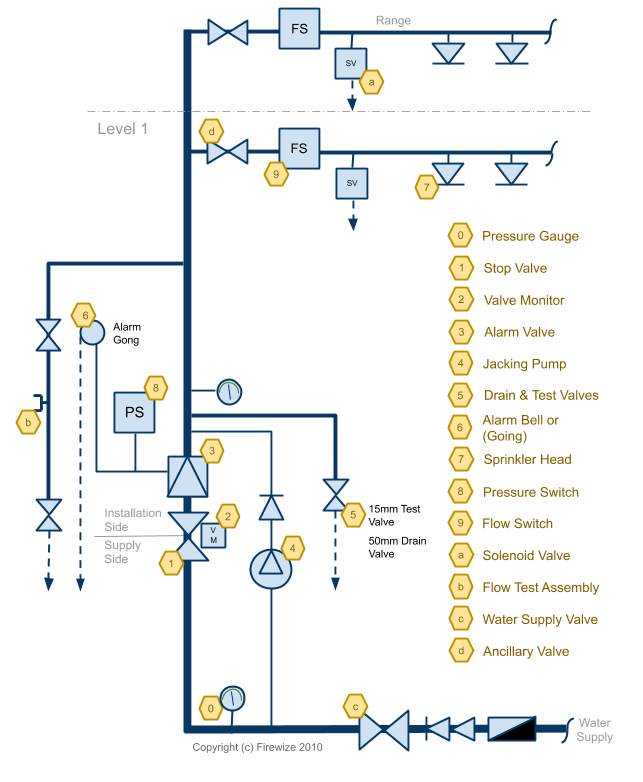
The centerline of the orifice should be at a right angle to the plane of the face of the hydrant outlet.

Completely open the valve on the flowing hydrant, making sure the path of flow to the drain or pathway is safe and clear of debris and obstacles.Note any elevation changes from the pressure hydrant to the structure and the flowing hydrant.Then completely open the valve and take the static pressure reading.
#Fire sprinkler design flow test install#
Note: If the hydrant has a ¼-inch outlet to attach pressure gauges (only found on dry-barrel hydrants), remove the plug and install the gauge in the ¼-inch outlet.

While some flow test can involve many hydrants flowing at the same time, the following example uses only one flowing hydrant. Also, ensure that drains are not blocked by leaves or other debris to prevent water backup. A water diffuser and sock can prevent damage to landscaping and roadways as well as redirect water to prevent ice patches on surfaces in the winter. You should have the proper equipment on hand, including a flow test kit with the correct nozzle size to attach to the hydrants. It is important to notify the water company or water authority before conducting any water flow test, since opening the hydrant could disrupt normal operating conditions in the water distribution system in that area. Incorrect readings can result in additional fire pumps for under-designed systems or costly overdesign in pipe sizing. A flow test is required in most jurisdictions and is critical for proper fire sprinkler system design. In addition, it is also necessary to perform a flow test to properly design a fire sprinkler system for a commercial or residential structure. Performing a fire hydrant flow test provides the actual static pressure, residual pressure and the flow from the hydrant. NFPA recommends that a residual pressure of 20 psi be maintained in fire hydrants for them to be effective for firefighting and preventing the contamination of public water supplies by backflow.

Fire hydrants are tested regularly to ensure that they are capable of providing water at an acceptable pressure and flow rate foe public health and firefighting operations. Fire hydrant flow test determine the flow rate and pressure in any location through-out a water company’s or water authority’s underground water distribution system.


 0 kommentar(er)
0 kommentar(er)
